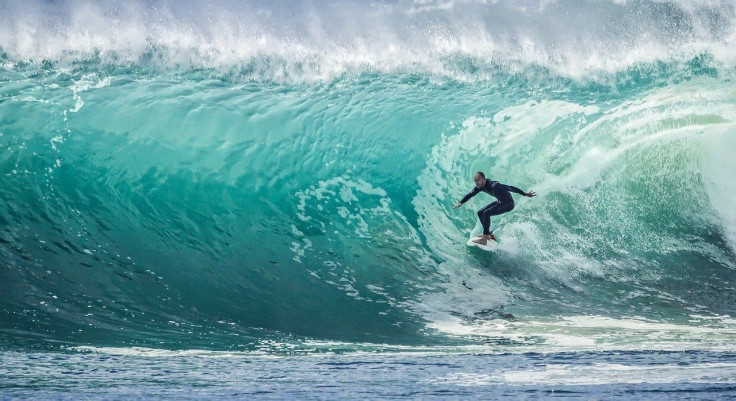Sharks Surf Too, But They Do It To Save Energy
KEY POINTS
- Researchers found gray reef sharks surfing in the updraft zones
- They don't do it for fun, but to reduce their energy expenditure
- The findings could help explain why sharks prefer certain areas
What do sharks do if they have to save a bit of energy? Apparently, they surf.
Florida International University (FIU) marine scientist Yannis Papastamatiou noticed the odd behavior during a diving trip, the university said in a news release. He saw sharks moving against rather strong currents but they were "barely moving their tails."
In a system that's quite like a conveyor belt, a shark would let the current take it back to where it began once it reaches the end of the line. Then the next shark also does the same, and it continues.
"During the day, they're pretty placid and relaxed, swimming with minimal effort," Papastamatiou said.
For a new study, published in the Journal of Animal Ecology, an international team of researchers led by Papastamatiou used acoustic tracking tags, diver observations and even "animal-borne cameras" to observe the strange behavior in gray reef sharks in the southern channel of Fakarava Atoll, French Polynesia.
Their work confirmed that the sharks remained in the channel even during the daytime when they weren't hunting. The sharks chose updraft areas and, even changed the surfing depth depending on whether the tide is incoming or outgoing.
Using a biochemical model, the researchers found that surfing in the updraft zones allowed the sharks to save 10 to 15% of their energy.
"Gray reef sharks save energy using predicted updraft zones in channels and 'surfing the slope,'" the researchers wrote. "Analogous to birds using wind-driven updraft zones, negatively buoyant marine animals may use current-induced updraft zones to reduce energy expenditure."
In other words, surfing lets the sharks get some rest.
The researchers' findings could help explain why there are more sharks in some places, the news release noted, adding that it may also help predict the places they prefer.
"This study is a nice demonstration of energy seascapes, a spatial representation of how much energy it costs an animal to move through an environment," Papastamatiou said.
"Marine environments are a lot more dynamic because of the water currents, which are much less predictable. They can change seasonally, throughout the day and even minute by minute. Ultimately, the energy seascape helps explains why these animals are in this channel hanging out there during the day. Now we have an answer," he added.

© Copyright IBTimes 2024. All rights reserved.






















